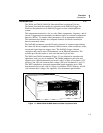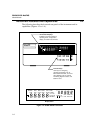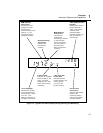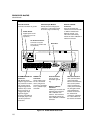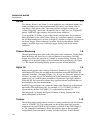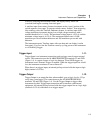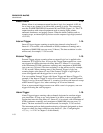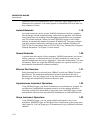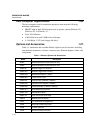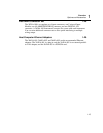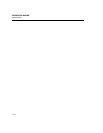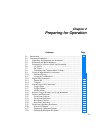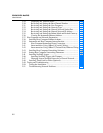
Overview
NetDAQ Logger Features and Capabilities
1
1-11
You can combine Alarm Trigger with External Trigger and Interval Trigger. For
example, set the Interval Trigger for 60 seconds (Interval 1) and the Alarm
Trigger for 10 seconds (Interval 2). Scanning is at 60-second intervals except
when a channel designated as an alarm trigger is in alarm, when scanning is at 10-
second intervals.
NetDAQ Logger Features and Capabilities 1-17.
NetDAQ Logger is the operating software for NetDAQ instruments. It lets you
configure and operate your system through a Windows-based environment. The
package installs either a 32-bit version for Windows 95 and Windows NT, or a
16-bit version for Windows 3.1. Chapters 3 and 4 of this manual provide an
overview of operating NetDAQ Logger. Online help provides more details.
Some major features of NetDAQ Logger include:
• Multiple Instruments. NetDAQ Logger lets you configure and control up to
20 instruments either as Asynchronous instruments or a Group Instrument.
• Data File Recording. NetDAQ Logger logs scan data into a choice of several
file types for each instrument or instrument group.
• Online Help. Online help describes the controls and operations.
• Real-time Data Display. The Readings Table displays the latest scan data
from the currently selected instrument. Quick Plot graphs scan data from any
eight channels. The Spy utility gets current readings from any eight channels
whether or not scanning is active.
• Real-Time Trend Plotting. Trend Link for Fluke (optional) lets you view real-
time or historical trends in your collected data. It compares data from multiple
sources, performs simple Statistical Process Control (SPC) calculations on
selected data portions, annotates data, highlights curve limits, zooms in on
data of interest, compares batches, and exports to spreadsheets or other
applications.
• Dynamic Data Exchange (DDE). You can link data to other Windows-based
applications, such as spreadsheets, with Dynamic Data Exchange (DDE).
Operating a NetDAQ Data Acquisition System 1-18.
You can configure NetDAQ hardware and software to operate over either an
isolated or general network. An isolated network includes NetDAQ instruments
and host computers only. A general network may also include servers, routers,
gateways, or other network devices. Both types of networks interconnect using
Ethernet (i.e., using the IEEE 802.3 or ISO 8802-3 standards).
A unique 2-digit Base Channel Number (BCN) entered at the instrument front
panel identifies each NetDAQ instrument on the network. All subsequent



